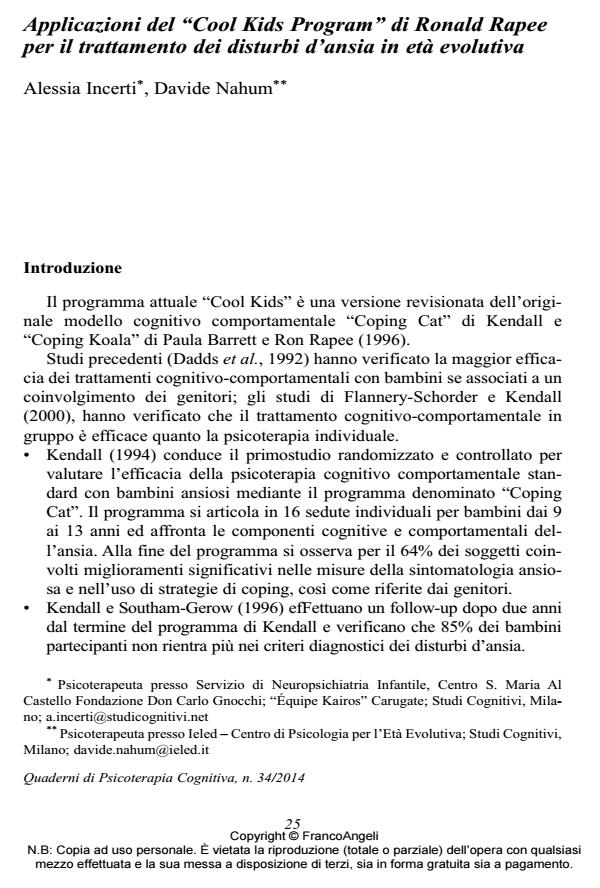Application of the "Cool Kids Program" of Ronald Rapee for the treatment of anxiety disorder in children
Journal title QUADERNI DI PSICOTERAPIA COGNITIVA
Author/s Alessia Incerti, Davide Nahum
Publishing Year 2014 Issue 2014/34
Language Italian Pages 16 P. 25-40 File size 146 KB
DOI 10.3280/QPC2014-034003
DOI is like a bar code for intellectual property: to have more infomation
click here
Below, you can see the article first page
If you want to buy this article in PDF format, you can do it, following the instructions to buy download credits

FrancoAngeli is member of Publishers International Linking Association, Inc (PILA), a not-for-profit association which run the CrossRef service enabling links to and from online scholarly content.
Often national health care services are forced to create long psychotherapy’s waiting lists for children, because resources are lower than needs. We need to use short term, valid and group-based therapies. Among different models we choosed the "Cool Kids Program" for the following reasons: It is an evidence based treatment, its effectiveness is based on studies conducted at Macquarie University, Royal North Hosiptal and Queensland University over a decade. It has both behaviour (psychoeducation and exposure) and cognitive (cognitive restructuring and disputing) factors. The Program asks for a high parent’s involvement; Barret et al. (1996); Mendlowitz et al. (1999); Cobham et al. (1998) found that CBT programs with both parents and child produce more significant results at the end of the treatment and after 3 and six months. The "Cool Kids Program" comes with a manual kit, wherein there are specific materials for every partecipant of the treatment, that can be used in therapy (the Therapist Workbook, the Parent Workbook, the Children Workbook). In this work, we describe the "Cool Kids Program" and its applications in public services and in private practice in Italy.
Keywords: Group CBT, anxiety disorder, children, parents
Alessia Incerti, Davide Nahum, Applicazioni del "Cool Kids Program" di Ronald Rapee per il trattamento dei disturbi d’ansia in età evolutiva in "QUADERNI DI PSICOTERAPIA COGNITIVA" 34/2014, pp 25-40, DOI: 10.3280/QPC2014-034003